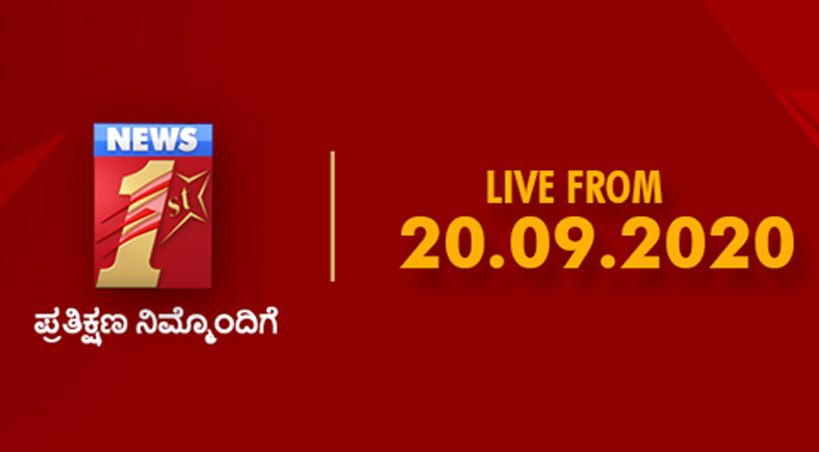Digital Payments In India Show Unprecedented Growth During Pandemic

The COVID-19 pandemic has given a body hit to the Indian economy. Its impact was more awful in divisions, for example, travel, friendliness, retail, and diversion. Thus, it is nothing unexpected that computerized installments strategies for products and ventures, for example, cards, wallets, UPI, and so forth have seen a precarious fall since the lockdown began. It is anticipated that numerous business foundations (relating to retail and amusement and so on) will most likely not get by after the finish of the pandemic. As indicated by the month to month releases by RBI, the advanced installments in April and paper-based installments dropped to 46 percent which is worth Rs. 84.1 trillion, from Rs. 156.5 trillion in March. The complete installment exchanges in volume, drooped 22 percent to 2.38 billion, from 3.07 billion in March. Advanced installment exchanges both in volume and worth contracted in April. In esteem, installments dropped 45 percent to Rs. 82.46 trillion from Rs. 150.85 trillion. Regarding volume, the drop was 21 percent to 2.36 billion from 3 billion. Another examination discussion, Worldline India expresses that in general the volume and estimation of advanced exchanges in Q1 2020 plunged by 10 percent and 12 percent individually when contrasted with Q1 2019. What’s more, exchanges with dealers plunged in Q2 because of expanded lockdown periods.
State of Card Payments and ATM Transactions in Retail– Retail part observed a huge plunge in tasks during lockdown which lead to a huge abatement in shopping. Accordingly, retail installments sunk to a low of 45 percent which is worth Rs. 19.66 trillion from Rs. 36.03 trillion. As far as volume, retail installments dropped to 2.37 billion from 3.06 billion. Additionally, being an imperative piece of the retail economy, card exchanges through charge, and Master cards likewise saw a plunge. It enlisted a decline of 57 percent to Rs. 49,807 crore in April, from Rs. 1.15 trillion in March in volume. Likewise, money withdrawals additionally split between April as a result of abandoned ATMs. In contrast with March (that represented nearly Rs. 2.51 trillion), money withdrawals represented Rs. 1.27 trillion in April. In volume terms, the money withdrawal from ATMs was 286.6 million in April when contrasted with a powerful 547.1 million in the earlier month. The number of exchanges through ATMs using debit cards likewise fell almost to half with a withdrawal of 285.2 million in April, when contrasted with 544.1 million in the first month. As per RBI information, there was a slight increment in the number of cards which incorporates both charge and Visas. There were more than 886.8 million cards in April, including 57.3 million Mastercards and 829.4 million debit cards. The complete number of cards in March was about 886.3 million. What’s more, there were 234,000 ATMs and 5.08 million retail locations (PoS) terminals.
Online Payment Becoming a Popular Mode of Payment– Despite the decrease in exchanges that RBI has recorded after the episode of coronavirus, the online installment exchanges have gotten mainstream in the monetary biological system. Henceforth, the computerized installments space will likewise get a lift once the recuperation begins. A report ‘101 Days of COVID-19 Era: Impact on Digital Payments’ discharged by Razorpay in the first seven day stretch of July, affirms the pattern. It expresses that advanced installment exchanges have bounced back by 23 percent in June 2020. The report expresses, “The general computerized exchanges declined by 12 percent over the most recent 101 days, contrasted with a 30 percent drop in the initial 30 days of lockdown.” Commenting on bouncing back of advanced installment exchanges Harshil Mathur, CEO and prime supporter of Razorpay attests, “The advanced installments industry couldn’t get away from the pandemic emergency; we saw a dunk of 30 percent in online installments since the lockdown started. Presently observing a bounce-back of 23 percent in the course of the most recent 30 days is an indication of steady restoration of the computerized economy.” Mathur accepts that there is an expanded interest for advanced installments in level 2 and 3 urban communities. Covid-19 has certainly moved the pattern to topple money to the degree which even demonetization couldn’t affect. Shockingly, Indians have now become increasingly open to paying for administrations without money. The ascent of Digital Payment Industry Clearly, COVID-19 has set up a correct direction for the computerized installment industry. As indicated by a KPMG last year’s report on computerized installment, the online installment industry is developing at the CAGR of 12.7 percent. A report by Statista tells that India was flushed with around 375 advanced installments fintech new companies in 2019. RBI recorded a flood in real money withdrawal volumes at PoS machines. It expanded in April to 4.08 million, from 3.36 million in March. This expansion as far as worth, remained at Rs. 111 crore, contrasted and Rs. 110 crore in March. Additionally, the number of exchanges at small scale ATMs utilizing the Aadhaar-empowered installment framework multiplied to 87.55 million in April, from 34.49 million. In the meantime, RBI is additionally encouraging individuals to receive online installment modes as a measure to contain the infection. This has pushed firms, MSMEs, gig laborers, and unbanked to bounce into the temporary fad of getting furnished with advanced stages just to execute cashless anyplace and anytime.
Sectors that added esteem– The anger of COVID-19 constrained different parts to close down their activities in the interim. Consequently, organizations embraced computerized answers for the general development of their activities while others decided on this change in outlook to remain in front of others. As indicated by the Razor pay report, the online training part developed by 23 percent during the 101 days of lockdown (March 24-July 2), as stretched out lockdown prompted an ascent sought after for online courses. Clinical administrations quickened as online conferences and buy expanded by 20 percent. To guarantee wellbeing and security from COVID-19, Indians picked to remain inside and took care of tabs on the web. This added to the development of the utility division by 163 percent. Another finding uncovers that due to stress in income across family units, customer installment conduct has changed. Pay later, Cardless-EMI, and EMI have become favored installment modes with a development of 290 percent, 178 percent, and 125 percent separately. Further, when it came to installment methods UPI kept on being the favored mode. It developed by 43 percent, cards by 40 percent, and net banking by 10 percent. Versatile wallet exchanges developed in the initial 30 days of lockdown, especially in level 2 urban communities. This was because of a spike in the notoriety of Amazon Pay, Jio Money, and Paytm. It was additionally because of expanded commitment towards PM Cares reserve and money-back offers.
The ascent of Digital Payment Startups– Small and medium organizations and buyers have understood the disappointment associated with taking care of money in the wake of encountering consistency of computerized installments. This has given a much need push to fintech firms. Detecting the chance, advanced installment new businesses have been proactively attempting to make a milestone all alone. One such fintech startup is Zaggle which offers prepaid cards, items, and answers for their venture customers. The firm has recently observed a remarkable jump of 600 percent with in excess of 7,00,000 clients of their virtual cards. Raj N Phani, Founder and Chairman, Zaggle tells, “The crisis has forced people and organizations to receive advanced stages, find new compelling fintech products, and adjust to another ordinary of computerized life in impulse.” He further includes, “This move-in advanced interest is one of the significant open doors for all fintech new companies. They will presently assume a significant job as a middle person and as a technology facilitator to every one of the individuals who have been attempting to move their traditional operations to a mechanical stage.” Sensing the supportability of the virtual cards, Phani speaks on the huge plans of his firm. He says, “Zaggle is seeing great development in virtual cards business. We will before long be propelling an open financial stage and free API alongside the financial framework. This Open Banking Platform will help corporates in all exchanges and bid in the ongoing for loans.” Zaggle recently has started its abroad activity in Canada in the period of May and is searching for development in London. Another digital installment player SpiderG views this circumstance as a catalyst for the development of digital installment new companies. Both CEO Ashwani Rathore and Co-organizer Harshal Ingle feel that the current situation underpins the development of digital installment stages all around. Introducing his perspectives about this, Rathore says, “Digital installment stages are seeing a sharp hop in the number of clients as money exchanges the nation over and observe a steep decline. Fintechs will advance all the more currently to bring an upset of contactless exchanges. With shoppers moving to computerized channels, every business will try to grasp advanced practices into their processes including micro-business visionaries, for example, paper merchants, milk sellers, etc.” SpiderG is an on-time installment assortment and a single tick installment dispensing application for taking care of salaries, utility tabs, and costs for miniaturized scale organizations. Shoppers can send updates, perform development, and computerize repeating e-bills to their clients for installment through this application. On the emergency drove execution, Rathore adds, “We have been faring admirably with around 15,000 small scale vendors up until this point and nearness in excess of 50 urban communities. With a presence in excess of 17 states, we produce almost 7,00,000 recurring solicitations month to month and cook to more than 15 small scale business fragments that utilize our services.” The firm has as of late propelled a smaller scale installment entrance, a shopping site, and an arrangement site for micro-organizations to give a lift to their computerized nearness as indicated by their needs. They are coordinating with different banks to provide innovative payment highlights and building their own technology stack for advanced loaning to meet the short-term capital needs of customers. Discussing quick goals, SpiderG aims to have 100,000 small scale organizations ready and 10 million repeating invoices by March 2021. In the comparative vein, XPay.Life, an NPCI-affirmed multi-service charge installment stage has clocked revenue of Rs. 3 crore in May with in excess of 60,000 exchanges. The firm noticed that the greater part of these exchanges was made towards the installment of power bills. Among different classifications, exchanges worth Rs. 23 lakhs were created from versatile vans which were conveyed in remote regions of Jharkhand to apportion money. Remarking on the flood in advanced installment transactions Rohit Kumar, Founder and CEO, XPay.Life opines, “We have joined forces with NPCI to carry the advantages of computerized installments to the unbanked pockets of our country and thereby work towards our strategic budgetary incorporation. As lockdown limitations for basic administrations were lifted in non-infected zones, 73,000 users were enlisted with exchanges timing up to Rs. 5.4 million.”
Cash Versus Cashless Economy– Cash economy is deeply embedded in the installment systems of our nation. In this manner, even dealers are hesitant to pick cashless installment alternatives. In spite of this, efforts to empower advanced methods after demonetization have done some amazing things. Agreeing to a recent study of RBI, the demand for the high worth designated currency over the past five years has outpaced low worth named currency. This again demonstrates that ‘cash is progressively utilized as a store of significant worth and less for making payments.’ However, the pace of increased cash available for use (CIC) obviously indicates a discernible move from cash. The study further says that the estimation of money withdrawals at ATMs to GDP is constant at around 17 percent. This rate was 15 percent during the demonetization period. The estimation of computerized installments to GDP expanded from 660 percent in 2014-15 to 862 percent in 2018-19. It unmistakably elaborates on the shift of customers from conventional to digital installments in India. However, India despite everything needs to make a biological system to bring the unbanked populace under computerized India. As per Mathur of Razorpay, progressive advancements in installment frameworks can just clear the pathway for another computerized India. He closes, “Digitisation should be clubbed with wise developments in money related exchanges focussed on improving client experience. On the off chance that fintech firms and banks rethink their plans of action and decide to cooperate, I accept, we are probably going to come out more grounded after this emergency.”



